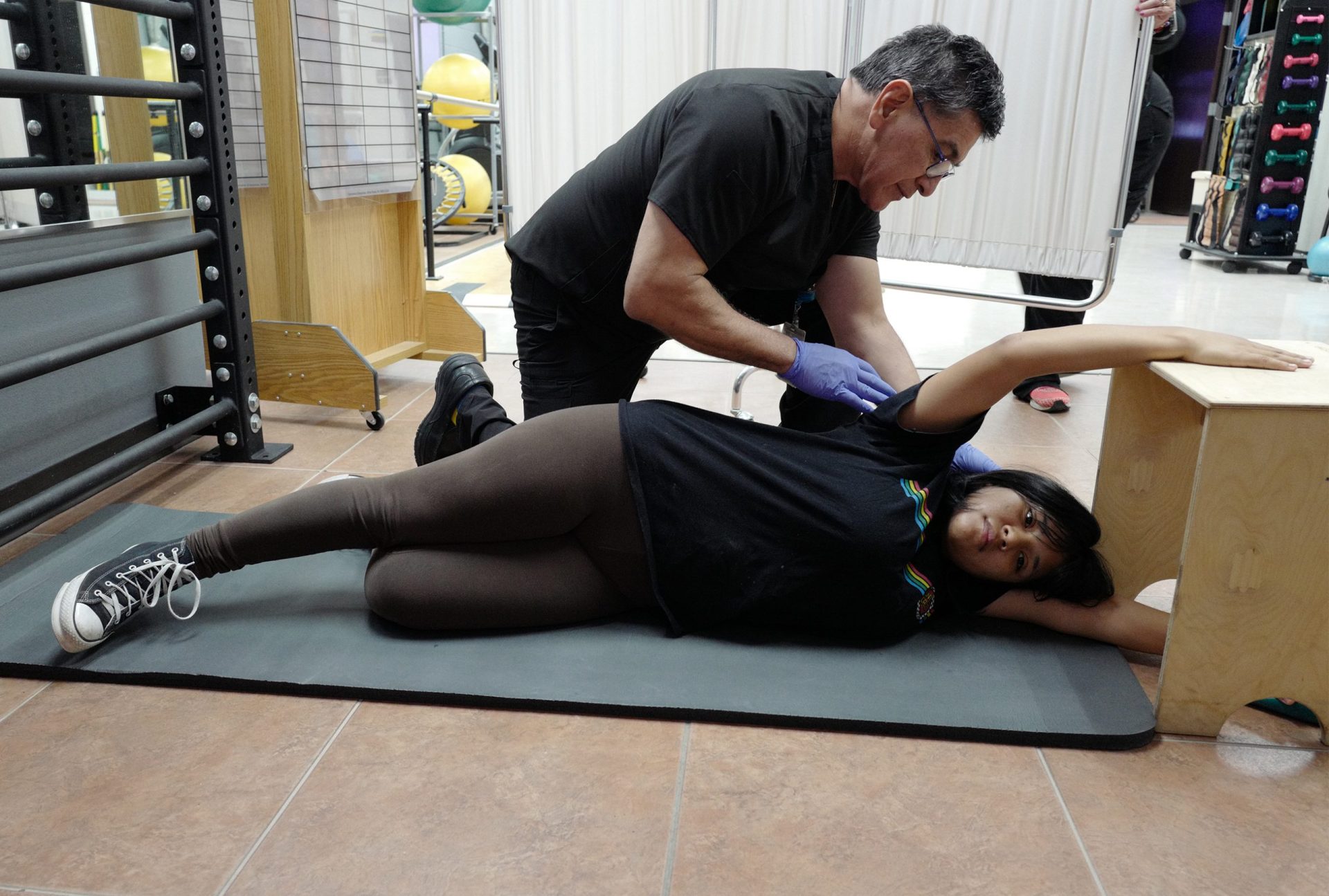|
Only have a minute? Listen instead
Getting your Trinity Audio player ready...
|

ALAMO — As far as he’s aware, Dr. Jorge Escobedo believes his clinic is the only one of its kind in the Rio Grande Valley that’s certified to treat scoliosis using the Schroth method, and he may have been the only one in the state just 10 years ago. This, he said, is a testament to what Escobedo fears is a lack of awareness and resources in South Texas to treat the abnormal spinal curvature condition, and he’s trying to do something about it.
Escobedo employs the Schroth method, a specialized approach for treating scoliosis that he’s developed expertise in practicing and is now expanding his clinic — the DHR Health Orthopedic and Sports Therapy Institute, located at 515 U.S. 83 Business in Alamo — to meet treatment needs.
This method is used to avoid surgery and rely on exercises that are unique to each patient.
“We’re one of the only facilities here in the Valley, the only one that I know of and the only one that is the most certified for the Schroth method,” Escobedo said at his clinic Wednesday.
A physical therapist who studied in Germany in 2009 to complete his certification in scoliosis therapy and who was certified in 2010, Escobedo said the treatment is complex and is based on several factors to help minimize the curvature or even return it to a more natural state.
The type of treatment depends on the angle and curvature of the spine. Escobedo explained a brace may be recommended for patients whose spinal curvature is about 25 degrees. Those who have a spinal curvature of about 45 to 50 degrees would need surgery.
“Everything boils down to getting the lungs and ribs to really expand and push on those muscles,” he explained. “The idea is not to correct the bone deformity but to actually train the muscle to correct the deformity.”
According to Escobedo, a majority of orthopedic surgeons and researchers use a chart provided by the Scoliosis Research Society, or SRS, to determine the severity of the curvature.

The International Society on Scoliosis Orthopaedic and Rehabilitation Treatment, or SOSORT, is another resource.
His newly expanded clinic can now accommodate more patients from the Valley who require this treatment as opposed to people having to travel as far as San Antonio, which he said may be the nearest location where this kind of treatment is provided.
In June 2007, the National Scoliosis Foundation published findings that showed up to 9 million people in the U.S. who are affected by scoliosis, or 3% of the population, and that while it can affect anyone at any age it’s early stages are often seen between the ages of 10 and 15.
Females are also eight times more likely to “progress to a curve magnitude that requires treatment,” according to the foundation. Escobedo shared a similar statistic, estimating that 80% of diagnoses are female.
There’s no data available for the rate of diagnosis or impact among Valley or South Texas residents, prompting Escobedo to urge the public to be more aware of scoliosis.
The best way to determine signs of scoliosis is the forward bend test in which a person bends forward showing the curvature and evenness of the spine.
He also recommends that schools go back to this test for scoliosis which was conducted by school nurses, who would then inform the parents and they would set up an appointment with a doctor.
Escobedo, however, also stressed that if anyone suspects they may have scoliosis to not self-diagnosis and instead encouraged residents to see their primary care physicians.









